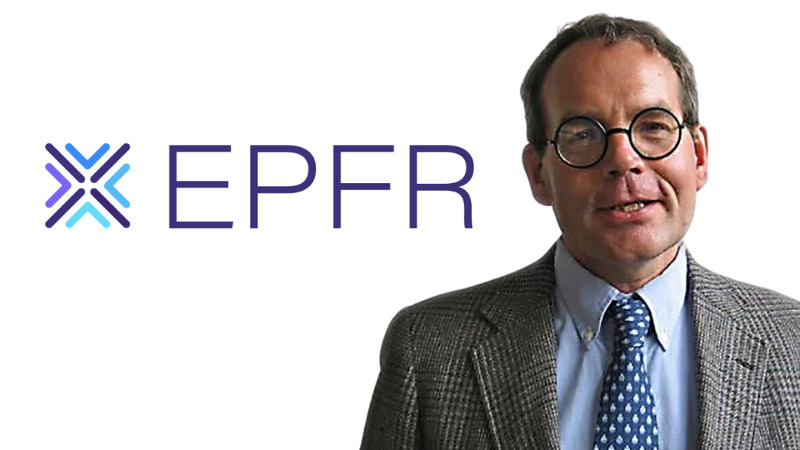Cameron Brandt: “Fund flows and allocation data is underutilised”
Ahead of the Tokyo Hedge Funds Club Dialogue Luncheon with EPFR on 7th June, Stefan Nilsson checked in with Cameron Brandt, EPFR’s Director of Research, to talk about global capital flows and how investors are using such data.
When it comes to fund flows and asset allocation data, what type of clients are you serving?
EPFR’s client base currently includes investment and bulge bracket banks – such as Goldman Sachs and Bank of America, ten of the world’s twelve largest central banks, multilateral agencies and development banks such as IMF, the World Bank, major fund management groups like Blackrock and Fidelity, buy-side quant shops and market intelligence providers. The user groups within those clients include sales and trading, market intelligence and risk assessment, quantitative and discretionary research, debt and equity capital markets desks, financial modelling and portfolio construction. We also have a small number of academic and wealth management clients.
Are you seeing increased demand for specific data or customised solutions from your clients?
Customised solutions, often utilising more than one of EPFR’s data sets, have been a key driver of sales and client retention over the past 18 months. While our client base is always interested in new offerings, and in some cases directly advocates for them, their current focus can best be summarised as making more of what EPFR already has to offer. Since 2010, EPFR’s overall coverage of share classes and the assets they manage have nearly tripled. Over the same period, we have added dozens of new standard filters – cryptocurrency, ESG, CITs, etc. – and launched six new data sets: stock-level flows and allocations, China share class allocations, FX allocations, fixed income flows and allocations, ultra-short-term bond fund flows and hedge fund flows. The upshot of this expansion of our available data is an offering that has many more potential use cases. Our clients often do not have the time or resources in the current market environment to identify and confirm these use cases. So, our five-person quant team spends much of its time developing custom proof-of-concepts for those clients. I should also mention that a large segment of our client base is hungry for intelligence about, and insights into, the rapidly growing universe of funds with socially responsible (SRI) and environmental, social and governance (ESG) mandates.
In which areas are you currently expanding or evolving your product and service offering?
In keeping with our clients’ desire to get more out of a consistently expanding pool of data, we are devoting a growing share of our research team’s time and resources to new ways of looking at, analysing and presenting our data. One example of this is the work our quant team is doing developing in-house factors for our data sets. As a non-quant, I always liken them to those lenses that the optometrist slips into the phoropters until the eye chart suddenly snaps into focus. Other initiatives include dynamic charting, new dashboards and improvements to our user interface. While improving our clients’ ability to utilise existing data is our major focus at the moment, we will be releasing a new data set in the second half of the year that will open a window into the fund of funds universe. Looking further ahead, we are actively searching for partners whose expertise will help us provide an even broader and more nuanced picture of global capital flows. Our current partnership with BarclayHedge, which gave us the critical mass of raw hedge fund data to launch our Hedge Fund Flows data set, is one example of this.
Is data on where money is moving and why underutilised by fund managers and investors? Are they missing out?
Among the biggest players in global finance, fund flows are a well-established input. Many of these organisations have been using what, if you accept the classical definition is one of the first alternative data sets, for over two decades. Fund flows and allocation data is, however, underutilised by smaller financial firms and the growing wealth management industry. Some of that, I think, is tied to ease-of-use issues and the daunting size of the EPFR offering which currently encompasses over 150,000 fund and ETF share classes with a collective AUM of US$46.5 trillion. As to the question of missing out, I obviously think that fund managers and investors who do not use our data are handicapping themselves. While mutual funds and ETFs only represent a slice of the complete universe of portfolio capital flows, it is a big slice and a very pure one. By pure I mean that the structure and regulation of mutual funds has been remarkably consistent, and the vast majority of countries with domestic mutual fund industries follow the same basic template. This means that comparisons over time, geographies and asset classes, and the signals that emerge from this kind of analysis, hold up in a way that outputs from other widely followed datasets do not. All that said, we are constantly finding new ways to utilise the data we collect, be it adding new filters, resting old assumptions – retail flows are not simply a contrarian signal – or creating products out of data we collect as part of the flows and allocations feeds. So, you can certainly make the case that our data is still underutilised by us.
What’s your personal macro-outlook for the rest of 2023?
Bumpy. With so many geopolitical, social and macroeconomic balls in the air, it’s inevitable some will fall as the year progresses. I do expect the US to slip into recession by the end of the year – higher interest rates are only part of a story that includes quantitative tightening and a contracting money supply – and see that recession being shallower but longer than many forecast. Shallower, because government deficit spending of well over US$1 trillion a year represents a lot of de facto fiscal stimulus, and longer because I think the combination of more retirees and fears about AI’s impact on employment will crimp the US consumption story that usually lifts US growth. That reluctance to spend in the face of changing demographics and economic narratives will also keep a lid on China’s post-lockdown rebound. The region I find myself paying the most attention to, once again, is Europe. In addition to issues of inflation, interest rates and debt dynamics, I expect the European Union will be further tested in 2H23 by immigration, drought and the war in Ukraine. Investors seem to share these concerns. After posting their biggest collective weekly inflow in over 11 months in late January, European equity funds have posted outflows in 14 of the past 16 weeks.
The Tokyo Hedge Funds Club Dialogue Luncheon discussion with EPFR will take place on 7th June at the Tokyo American Club. More info here.
EPFR is a leading provider of fund flows and asset allocation data. www.epfr.com









